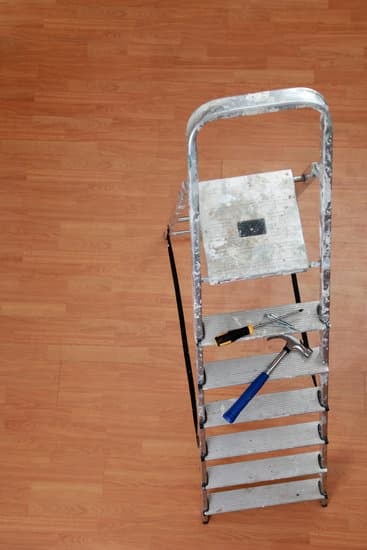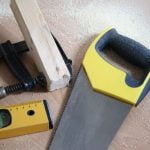Can you take out a home improvement loan to fund your renovation projects? Whether you’re planning a major remodel or just looking to make some upgrades, a home improvement loan can provide the financing you need.
But before you apply for a loan, it’s important to understand what these loans are and how they work. In this article, we’ll explore the ins and outs of home improvement loans, including the different types available, eligibility requirements, pros and cons, finding the right lender, applying for a loan, using the funds wisely, and even alternative financing options.
Many homeowners consider taking out a home improvement loan for various reasons. From updating outdated features to increasing property value for resale or simply making your living space more comfortable and functional – there are countless benefits to investing in home improvements. However, proper planning and budgeting are essential when embarking on any renovation project. Home improvement loans can be a valuable tool in achieving your desired renovations while managing costs effectively.
Understanding the different types of home improvement loans available is crucial in determining which option best suits your needs. Secured vs unsecured loans, personal loans, home equity loans, and lines of credit are among the common choices. Each type has its own set of advantages and disadvantages that should be carefully weighed against eligibility requirements before making a decision.
Types of Home Improvement Loans
When it comes to funding home improvement projects, there are several types of loans available to homeowners. These loans can be useful in financing renovations, repairs, or upgrades to your home. Understanding the different types of home improvement loans can help you choose the best option for your specific needs.
One common differentiation among home improvement loans is whether they are secured or unsecured. Secured loans require collateral, such as your home or other assets, to secure the loan, while unsecured loans do not. Personal loans are a type of unsecured loan that can be used for various purposes, including home improvements.
On the other hand, home equity loans and home equity lines of credit (HELOC) use your home’s equity as collateral for the loan. Another option is the Title I Property Improvement Loan Program, which is backed by the Federal Housing Administration and is specifically designed for home improvement projects.
Each type of loan has its own set of requirements and considerations, so it’s important to carefully evaluate which option aligns best with your financial situation and goals. For example, if you have a good credit score and substantial equity in your home, a HELOC or home equity loan might offer favorable terms.
On the other hand, if you don’t want to risk losing your home as collateral or if you have a smaller project in mind, a personal loan could be a suitable choice.
Before taking out any type of loan for home improvements, it’s crucial to research and compare lenders to find one that offers the most favorable terms and rates for your specific circumstances. Additionally, understanding how each type of loan works and its potential impact on your finances will help you make an informed decision about the best way to finance your home improvement projects.
Eligibility and Requirements
Before applying for a home improvement loan, it’s important to understand the eligibility criteria and requirements that lenders typically look for. One of the most critical factors is your credit score. Lenders will generally look for a good to excellent credit score when considering you for a loan. This is because a higher credit score signals to lenders that you are a responsible borrower who is likely to repay the loan on time.
In addition to your credit score, lenders will also look at your income and employment history. They want to ensure that you have a stable source of income that will allow you to make the monthly loan payments. Some lenders may have specific income requirements that you must meet in order to qualify for a home improvement loan.
Another important factor that lenders consider is the loan-to-value ratio, which is the ratio of the loan amount to the appraised value of your home. Lenders prefer lower loan-to-value ratios, as this reduces their risk in case you are unable to repay the loan. Finally, you will need to provide documentation such as proof of income, tax returns, and other financial information as part of the application process.
Understanding these eligibility requirements can help you determine whether you are ready to apply for a home improvement loan and can also guide your preparations for the application process. By having a clear understanding of what lenders are looking for, you can increase your chances of being approved for a home improvement loan that meets your needs.
Pros and Cons of Home Improvement Loans
When considering taking out a home improvement loan, it’s important to carefully weigh the pros and cons. One of the main advantages of using a home improvement loan is that it allows homeowners to make necessary renovations or repairs without having to dip into their savings.
This can be especially beneficial for larger projects that require a significant amount of funding upfront. Additionally, home improvement loans often come with lower interest rates compared to other types of unsecured loans, making them a more affordable financing option.
However, there are also potential drawbacks and risks associated with taking out a home improvement loan. One such drawback is the fact that borrowers will be taking on additional debt, which can impact their overall financial situation.
It’s crucial for individuals to consider whether they have the means to repay the loan in a timely manner before committing to this type of financing. Additionally, some home improvement loans may require collateral, such as equity in the property, putting the borrower’s asset at risk if they are unable to make payments.
Before deciding to take out a home improvement loan, it’s essential for homeowners to carefully evaluate their individual financial circumstances and goals. By conducting thorough research and seeking advice from financial professionals or lenders, individuals can gain a better understanding of whether this type of financing is the right choice for their specific needs.
Comparing the pros and cons and determining how it aligns with their long-term financial plans will ultimately help borrowers make an informed decision when it comes to utilizing home improvement loans.
Finding the Right Lender
When looking for a lender for a home improvement loan, it’s important to do thorough research and comparison shopping to find the best terms and rates. Here are some tips for finding the right lender:
- Research and compare: Take the time to research and compare different lenders offering home improvement loans. Look at factors such as interest rates, fees, and repayment terms.
- Credit unions and banks: Check with local credit unions and banks, as they may offer competitive rates for home improvement loans.
- Online lenders: There are many online lenders that specialize in personal loans, including those for home improvement. Consider applying with online lenders to see if they offer better terms than traditional financial institutions.
In addition to comparing interest rates and fees, there are certain characteristics you should look for in a lender when considering a home improvement loan:
- Reputation: Look for a lender with a good reputation for customer service and transparent lending practices.
- Experience: Consider working with a lender who has experience in providing home improvement loans specifically.
- Flexibility: Find a lender who offers flexibility in loan terms, repayment options, and fund disbursement.
By taking the time to find the right lender for your home improvement loan, you can ensure that you get the best possible terms and rates, ultimately saving you money in the long run. It’s important not to rush this decision and to carefully consider all options before making your choice.
Applying for a Home Improvement Loan
Step-by-Step Guide to the Application Process
When applying for a home improvement loan, the first step is to research and compare different lenders to find the best loan terms and rates. Once a lender has been chosen, the application process can begin. The borrower will need to provide personal and financial information, including proof of income, employment history, and credit score. It’s important to carefully read and understand all the terms and conditions of the loan before submitting an application.
After the application has been submitted, the lender will review the borrower’s creditworthiness, income stability, and overall financial situation. They may also require a home appraisal to assess the current value of the property and verify that the requested loan amount is in line with the property’s worth. The approval process typically takes a few days to a few weeks, depending on the lender’s internal processes.
What to Expect During the Loan Approval Process
During the loan approval process, borrowers can expect to receive updates from their lender regarding their application status. This may include requests for additional documentation or information, as well as updates on whether their application has been approved or denied. If approved, borrowers will receive details about their loan terms, including interest rate, repayment schedule, and any additional fees.
Once approved, borrowers will need to sign a loan agreement that outlines all the terms and conditions of the loan. This document should be carefully reviewed before signing to ensure that there are no surprises down the road. After signing the agreement, some lenders may require a waiting period before funds are disbursed, while others may release funds more quickly.
Typical Timeline for Funding and Disbursal of Loan Amount
The timeline for funding and disbursal of a home improvement loan can vary depending on the lender and individual circumstances. In general, once a loan has been approved and all necessary paperwork has been completed, funds can be disbursed within a few days to a few weeks.
However, some lenders may offer expedited funding options for urgent projects or time-sensitive renovations. It’s important for borrowers to inquire about this timeline when researching potential lenders and choose one that aligns with their project timeline.
Using the Funds Wisely
Once you have successfully secured a home improvement loan, it is essential to use the funds wisely to ensure that your projects are completed effectively and efficiently. The key to using the funds wisely is prioritizing projects and making the most of the loan amount. Before starting any work, it’s important to create a detailed plan outlining which areas of your home need attention and how much each project will cost.
When using the loan funds for home improvement, it’s crucial to prioritize essential projects over cosmetic upgrades. This includes addressing any structural issues or necessary repairs before focusing on aesthetic improvements. Additionally, allocating funds for energy-efficient updates can help save money on utility bills in the long run. It’s also important to obtain multiple quotes from contractors and suppliers to ensure that you are getting the best value for your money.
Another aspect of using the funds wisely is avoiding common pitfalls and mistakes when executing your home improvement projects. This includes staying within budget, working with reputable contractors and suppliers, and obtaining all necessary permits for construction or renovation. By using the funds responsibly and thoughtfully, you can maximize the impact of your home improvement loan and increase the overall value of your property.
Alternatives to Home Improvement Loans
In conclusion, when considering a home improvement project, it’s important to explore all available options for financing. While home improvement loans can provide the funding needed for renovations or repairs, they may not be the best choice for everyone.
It’s essential to weigh the pros and cons of taking out a loan, as well as considering alternative methods of funding. By doing thorough research and carefully evaluating individual financial situations, homeowners can make informed decisions about the most suitable way to finance their home improvement projects.
Furthermore, before committing to a home improvement loan, individuals should also consider DIY and cost-saving alternatives. Some projects may be feasible to tackle without borrowing money, especially if homeowners are willing to put in sweat equity and take on some of the work themselves. Additionally, exploring other financing options such as personal savings, credit cards with favorable terms, or even grants and rebates can potentially offer more affordable ways to fund home improvements.
Ultimately, whether opting for a home improvement loan or exploring other avenues for financing, it’s crucial for homeowners to prioritize their projects and allocate funds wisely. By carefully planning and budgeting for home improvements, individuals can maximize the impact of their investment while avoiding common pitfalls and mistakes. Making informed decisions about financing options will ultimately lead to successful and satisfying home improvement outcomes.
Frequently Asked Questions
Is It Smart to Take Out a Loan for Home Improvement?
Taking out a loan for home improvement can be a smart decision, especially if the renovations will increase the value of your home. It allows you to make necessary upgrades or repairs without draining your savings all at once.
However, careful consideration should be given to the terms and interest rates of the loan to ensure that it is a financially wise decision in the long run.
What Is the Difference Between a Home Equity Loan and a Home Improvement Loan?
The main difference between a home equity loan and a home improvement loan lies in how they are secured. A home equity loan uses the equity in your home as collateral, and the funds can be used for any purpose, including home improvements.
On the other hand, a home improvement loan is specifically designed for renovation projects and does not necessarily require any equity in your home.
Are Home Improvement Loans Tax Deductible?
In most cases, interest on home improvement loans is not tax deductible unless the renovations are considered to add significant value to your primary residence. However, there are some specific circumstances where you may be able to deduct the interest, such as if you use a home equity loan specifically for substantial improvements that increase your property’s value.
It’s important to consult with a tax professional or financial advisor to determine if your situation qualifies for any tax deductions related to home improvement loans.

I’m thrilled to have you here as a part of the Remodeling Top community. This is where my journey as an architect and remodeling enthusiast intersects with your passion for transforming houses into dream homes.





